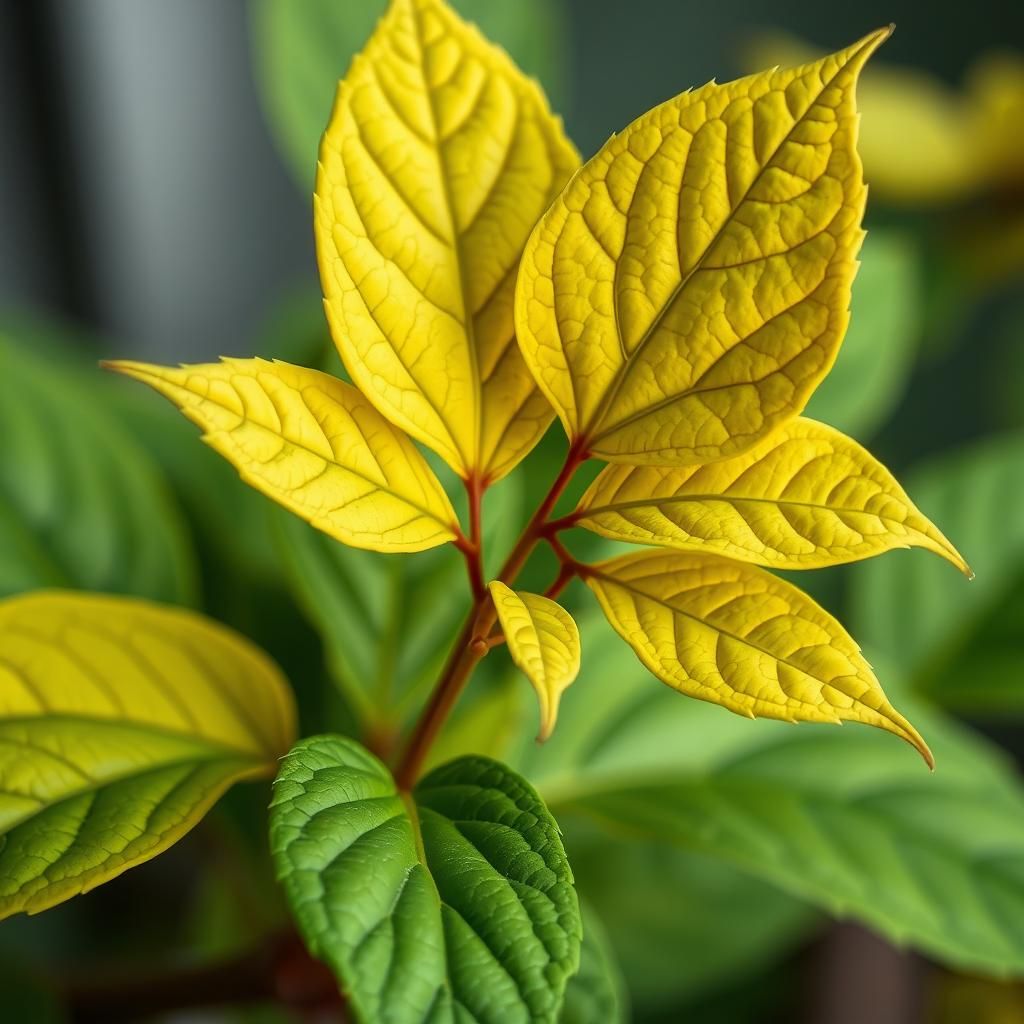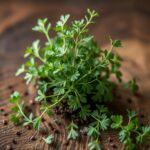Should I Cut Off Yellow Leaves? Essential Tips for Plant Care and Maintenance

When it comes to caring for your plants, yellow leaves can be a common concern that leaves many gardeners wondering what to do. Should you cut them off or wait it out? Understanding the reasons behind leaf discoloration is essential for effective plant maintenance. In this article, we will explore the causes of yellow leaves, the benefits of pruning, and essential tips for ensuring your plants stay healthy and vibrant. Whether you're a seasoned gardener or a novice, this guide will provide you with the knowledge needed to make informed decisions about the care of your greenery.
Should I Cut Off Yellow Leaves?
Cutting off yellow leaves can be beneficial for the overall health of your plant, as it can help prevent the spread of disease and encourage new growth. Yellowing leaves often indicate that something is wrong, whether it's overwatering, nutritional deficiencies, or inadequate light. By removing these leaves, you not only improve the aesthetics of your plant but also direct its energy towards healthier foliage. However, it's essential to assess the plant's overall condition before making any cuts, as some yellow leaves may fall naturally as part of the plant's life cycle.
Understanding the Causes of Yellow Leaves
Yellow leaves can be a sign of various issues, such as nutrient deficiencies, overwatering, or underexposure to sunlight. For instance, a lack of nitrogen can lead to yellowing, as this nutrient is crucial for chlorophyll production. On the other hand, soggy soil can cause roots to rot, leading to yellow foliage. By understanding the underlying cause, you can take appropriate action to rectify the health of your plant before resorting to pruning.
The Importance of Pruning
Pruning yellow leaves is an important aspect of plant care, as it removes damaged or unhealthy foliage that could hinder the plant's growth. By eliminating these leaves, you help improve air circulation, reducing the risk of fungal infections. Furthermore, removing yellow leaves allows the plant to redirect resources towards healthier growth, which can lead to a more vigorous and vibrant appearance.
When to Cut Yellow Leaves
The ideal time to cut yellow leaves is when you notice they are significantly affecting the plant's health or aesthetics. If the yellowing is widespread, it may indicate a more serious issue that needs to be addressed first. On the other hand, if only a few leaves are yellowing and the majority appear healthy, you can proceed with pruning those specific leaves. Always use clean, sharp tools to prevent injury to the plant and reduce the risk of disease transmission.
How to Prune Yellow Leaves
When pruning yellow leaves, it’s crucial to use clean and sharp scissors or pruning shears to make a clean cut. Start by assessing which leaves are truly unhealthy; you want to cut away leaves that are completely yellow, brown, or wilted. Make your cuts at the base of the leaf stem, ensuring you do not disturb surrounding healthy foliage. This careful technique minimizes stress on the plant while promoting recovery and growth.
Post-Pruning Care
After cutting yellow leaves, provide your plant with proper care to ensure optimal recovery. This includes adjusting watering schedules, checking for adequate light conditions, and determining if any nutritional supplements are needed. Monitoring the plant closely after pruning can help you catch any potential issues early, allowing you to maintain its health and vigor.
| Cause | Response |
|---|---|
| Nutrient Deficiency | Apply a balanced fertilizer. |
| Overwatering | Reduce watering frequency and improve drainage. |
| Insufficient Light | Move the plant to a brighter location. |
| Pest Infestation | Inspect and treat with appropriate pest control. |
| Fungal Infection | Remove affected leaves and improve airflow. |
Should yellow leaves be cut?

Understanding Yellow Leaves
Yellow leaves can indicate various issues with a plant's health. They may signal environmental stress, nutrient deficiencies, or diseases. Recognizing why leaves turn yellow is crucial in making informed decisions about plant care.
- Environmental Stress: This can result from improper watering, extreme temperatures, or inadequate light.
- Nutrient Deficiencies: Plants lacking essential nutrients like nitrogen, magnesium, or iron often show yellowing leaves.
- Diseases and Pests: Yellow leaves may also indicate infestations or fungal infections affecting plant health.
Benefits of Cutting Yellow Leaves
Cutting yellow leaves can be beneficial in promoting the overall health of the plant. Removing these leaves can encourage new growth and prevent the spread of potential diseases.
- Improved Aesthetics: Removing yellow leaves enhances the visual appeal of the plant.
- Increased Air Circulation: Trimming unhealthy foliage allows for better air circulation, reducing the risk of mildew.
- Encouragement of New Growth: By cutting off yellow leaves, you can redirect the plant’s energy to healthier parts, fostering new healthy leaves.
Best Practices for Cutting Yellow Leaves
When cutting yellow leaves, it's essential to follow certain best practices to ensure the plant remains healthy. Proper techniques can help minimize stress on the plant and prevent further damage.
- Use Clean Tools: Always use sterilized scissors or pruning shears to avoid introducing diseases.
- Cut at the Base: Remove yellow leaves at the point where they connect to the stem to prevent leaving any part that could decay.
- Monitor the Plant’s Response: After cutting, observe how the plant reacts to ensure it adjusts well to the changes.
When to Cut Yellow Leaves
Timing is crucial when deciding to cut yellow leaves. There are specific situations when cutting may be more beneficial for the plant's overall growth and health.
See also:
- During Active Growth Periods: Prune during the growing season to encourage faster recovery and new growth.
- When Signs of Damage Occur: If yellow leaves are also wilting or browning, it’s time to prune them for the plant's welfare.
- After Diagnosing Issues: Once you have identified the cause of yellowing, cutting leaves may help to stop the problem from escalating.
Impact on Plant Health
The impact of cutting yellow leaves on plant health can be significant. Properly managed, this practice can lead to overall metabolic improvement in the plant.
- Enhanced Photosynthesis: Fewer yellow leaves mean more healthy green leaves, which are essential for photosynthesis.
- Reduced Disease Risk: By removing unhealthy foliage, the likelihood of spreadable diseases decreases.
- Balanced Nutritional Uptake: Healthy parts of the plant can better absorb nutrients when unhealthy leaves are removed, promoting better overall health.
Should we remove yellow leaves?

Removing yellow leaves from plants can be a beneficial practice, but it greatly depends on the specific circumstances of the plant and the reasons for the yellowing. Yellow leaves often indicate a problem with the plant's health, such as nutrient deficiencies, overwatering, underwatering, or pest infestations. Here are some key points to consider regarding the removal of yellow leaves:
1. Health Indication: Yellow leaves can be a sign that the plant is stressed or unhealthy. By removing these leaves, you can help improve the overall health of the plant as it directs its energy to healthier foliage.
2. Aesthetic Appeal: From a visual standpoint, plants with yellow leaves may appear unattractive. Removing these leaves can enhance the appearance of your plant and help maintain a lush and vibrant look.
3. Prevention of Disease: Yellow leaves can become a breeding ground for pests and diseases. By removing them promptly, you can minimize the risk of spreading illness to other parts of the plant or nearby plants.
4. Encouraging New Growth: When you prune off yellow or dead leaves, it can stimulate the growth of new leaves. The plant can use its resources more effectively, often leading to a bushier and healthier appearance.
5. Natural Process: It’s essential to note that yellowing leaves can also be a natural part of a plant's life cycle. Leaves may turn yellow and drop off as part of seasonal changes or even as part of normal aging. Thus, not all yellow leaves necessarily require removal.
Understanding the Causes of Yellow Leaves
Understanding why leaves turn yellow is crucial before deciding to remove them. There are several common causes of yellowing:
- Overwatering: This can lead to root rot, causing leaves to yellow.
- Nutrient Deficiencies: Lack of essential nutrients like nitrogen can lead to chlorosis.
- Pest Infestations: Pests such as spider mites can cause yellow leaves.
When to Remove Yellow Leaves
Knowing when to remove yellow leaves can help in managing plant health effectively. Consider the following:
- Timing: It is best to remove yellow leaves during the active growing season to boost new growth.
- Severity: If the majority of leaves are yellow, it may indicate a more significant issue beyond just leaf removal.
- Continuous Monitoring: Regularly check your plants to determine if yellowing is a sporadic issue or part of a broader problem.
Benefits of Removing Yellow Leaves
The act of removing yellow leaves can offer several benefits:
- Improved Plant Health: Redirects energy to healthier leaves and promotes overall vigor.
- Enhanced Aesthetics: Contributes to a cleaner and more visually appealing plant.
- Reduction of Pests: Minimizes the chances of pest infestations linked to decaying foliage.
How to Properly Remove Yellow Leaves
Proper techniques for removing yellow leaves can avoid damage and stress to the plant:
See also:
- Use Clean, Sharp Tools: This prevents the spread of disease and allows for a clean cut.
- Cut at the Base: Remove the leaf at its stem to ensure a clean break.
- Avoid Over-Trimming: Only remove leaves that are entirely yellow or severely damaged.
Aftercare for Plants with Removed Yellow Leaves
Aftercare is essential to help plants recover from the stress of leaf removal:
- Monitor Watering: Adjust your watering practices to avoid future yellowing.
- Fertilize if Needed: Provide nutrients if the yellowing was due to deficiencies.
- Observe Growth: Keep an eye on the plant's health to ensure new growth appears healthy.
Should I cut off the yellow part of the leaf?
Should you cut off the yellow part of the leaf? This is a common question among plant enthusiasts and gardeners. The answer often depends on the condition of the plant and the reasons behind the yellowing of the leaves. Yellow leaves can indicate various issues such as nutrient deficiencies, overwatering, or natural aging.
Cutting off the yellow part can be beneficial for your plant. Here are some key considerations to keep in mind:
Understanding Why Leaves Turn Yellow
Yellow leaves can result from several factors related to plant care. Identifying the cause is crucial before making any cuts:
- Nutrient Deficiency: A lack of essential nutrients, particularly nitrogen, can lead to yellowing.
- Watering Issues: Overwatering or underwatering can stress the plant and change the leaf color.
- Pests or Diseases: Insects or fungal infections may cause discoloration, making it necessary to address broader plant health issues.
Benefits of Pruning Yellow Leaves
Pruning yellow leaves can enhance the overall health of the plant. Here are some advantages:
- Improved Aesthetics: Cutting off unhealthy leaves can make the plant look tidier and more vibrant.
- Preventing Disease Spread: Removing affected leaves helps to limit the chances of diseases spreading to healthy parts of the plant.
- Redirecting Energy: By trimming away yellow leaves, the plant can focus its energy on healthy growth rather than maintaining dying foliage.
When Not to Cut Yellow Leaves
There are circumstances under which cutting yellow leaves might not be advisable:
- Natural Aging: If the yellowing is due to the natural aging process, it may not be necessary to cut them off.
- Stress Recovery: If the plant is recovering from stress, it might be better to leave the yellow leaves until it regains strength.
- New Growth: If new growth is visible, the plant might be utilizing nutrients from older leaves; cutting them could harm this process.
Best Practices for Cutting Yellow Parts
If you decide to proceed with cutting yellow leaves, follow these best practices:
- Use Clean Tools: Always use sterilized scissors or pruning shears to minimize the risk of infection.
- Avoid Cutting Too Much: Focus on only removing the most severely affected leaves to keep the plant intact.
- Monitor Post-Pruning: After cutting, observe the plant for any changes and continue to care for it properly.
Aftercare Following Leaf Removal
Once you have cut off the yellow parts, it's essential to care for the plant properly:
- Adjust Watering: Ensure that your watering routine matches the needs of the plant to prevent future yellowing.
- Fertilize if Necessary: If a nutrient deficiency is evident, consider using an appropriate fertilizer to support recovery.
- Monitor Conditions: Ensure that the plant is in a suitable environment regarding light, temperature, and humidity to promote healthy growth.
Questions from Our Readers
Should I cut off yellow leaves?
Yes, you should consider cutting off yellow leaves as it can help improve the overall health of your plant. Yellow leaves may indicate that the plant is stressed or not receiving the proper nutrients. By removing them, you allow the plant to focus its energy on healthier leaves and new growth.
What causes leaves to turn yellow?
Leaves turn yellow due to various reasons, including nutrient deficiencies, overwatering, or pests. Identifying the cause is crucial, as it enables you to address the underlying issue and promote healthier leaf growth.
When is the best time to cut yellow leaves?
The best time to cut yellow leaves is during the growing season, typically in spring or summer, when the plant is actively growing. This ensures that the plant can recover and redirect energy toward new healthy growth.
See also:
Will cutting yellow leaves harm the plant?
No, cutting yellow leaves will not harm the plant if done correctly. In fact, it can be beneficial by removing unhealthy foliage, which can prevent the spread of disease and encourage the plant to thrive.

If you want to read more articles like Should I Cut Off Yellow Leaves? Essential Tips for Plant Care and Maintenance, we recommend you check out our Gardeners category.
Leave a Reply

Related Articles